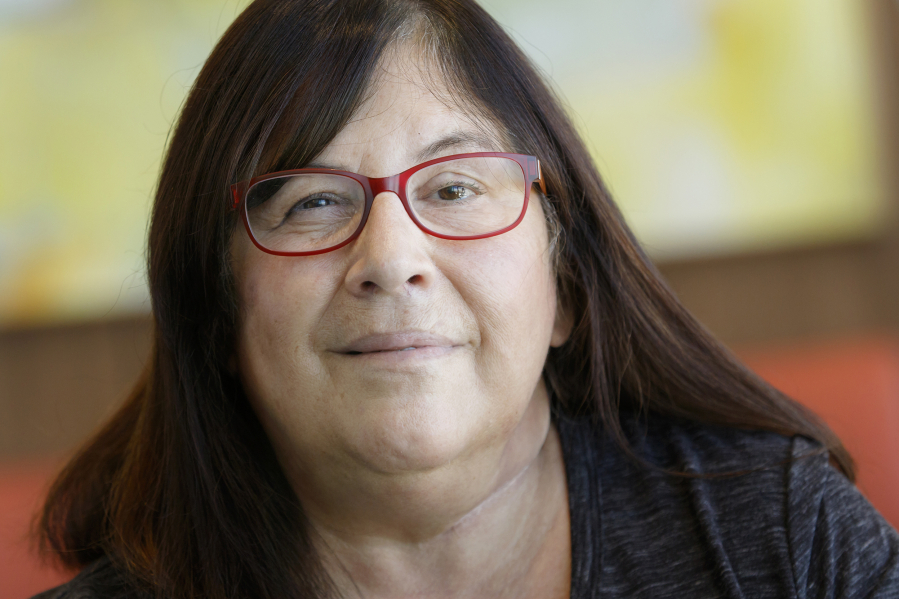Jarmila “Jarm” Hawes lost a lot after she experienced a hemorrhagic stroke in 2015.
She lost her ability to work. She lost her ability to eat and drink normally. She lost her ability to walk by herself. She lost her independence.
The right side of her face was paralyzed, and with that, she lost the ability to smile.
“It was hard to look in the mirror. I didn’t for a long, long time,” said Hawes, a 56-year-old Vancouver resident.
The right side of her face had a sunken, droopy affect, which created self-esteem issues for Hawes. She was told by multiple doctors there was nothing that could be done. But when she was getting help with some cornea trouble, a doctor referred her to Oregon Health and Science University reconstructive surgeon Dr. Myriam Loyo Li for facial reanimation surgery.
OHSU is the only institution in Oregon, and one of the few on the West Coast, to offer reanimation surgery, which involves manipulating, connecting and transferring nerves and muscles to help overcome facial paralysis.
“She couldn’t control her lips. She couldn’t smile,” Loyo Li said. “It’s hard to have nonverbal communication when you can’t smile and people stare and look at you funny.”
Hawes was nervous about the surgery but excited. After a consultation in March 2016, she underwent the procedure a month later.
The surgery involved transferring nerves from the left side of Hawes’ face to the right side. Loyo Li worked with neuro-otologist Dr. Tim Hullar, who assisted in mobilizing the facial nerve behind Hawes’ ear so it could reach nerves on the other side of her face and tongue.
“When we take a nerve from an area, we create a donor deficit, so we have to sacrifice something of the area where we are taking the nerve and borrowing it,” Loyo Li said. “For example, Jarm’s tongue is a little bit weak. But for her good side of the face, it’s really crazy and magical how there’s not much deficit, even though I stole some of the nerves.”
To help connect the nerve from the left or “good” side of her face to the right side, the doctors used a nerve from the back of her leg. This is all done under an operating microscope because the nerves used were only about 4 millimeters long.
The nerves were sutured together in a process called nerve coaptation.
The nerves start growing and sprouting like roots until they “get to the place they want to go and start moving the muscles in the face,” Loyo Li said. After the surgery, Hawes began physical therapy with Margaret McReynolds, and it took four months before Hawes started to see any progress. It came in the form of a tiny facial twitch she noticed while taking a selfie.
Hawes has seen lots of improvement since the stroke. She still has balance issues, but she can walk her dog. She probably won’t return to full-time work, but she hopes to eventually find something to help fill her time. She jokes that her job is vacationing. She visited Hawaii in July and will return next year. She likes kayaking, and visiting casinos from time to time.
Hawes married Ken May, her boyfriend of 15 years in August, and said she feels a renewed self-esteem since the surgery. She is more social and gets lunch with friends. At her worst moments after the stroke, she would only leave her house for medical appointments, and mostly watched TV. Her friend Katie Lewis can tell the difference.
“I’m so happy,” Lewis said. “Why her? I don’t know. I don’t want her to be miserable, but the growth, it makes me happy. I just want her to be happy.”
Loyo Li said Hawes can probably see even more improvement with time. That will mostly be dependent on physical therapy, and her brain relearning how to move things again, Loyo Li said. Hawes said she is taking a break from physical therapy for insurance reasons but plans to start again soon.
“I’m more than grateful for what I’ve achieved, and I’m still a work in progress,” Hawes said. “I’m not done.”




